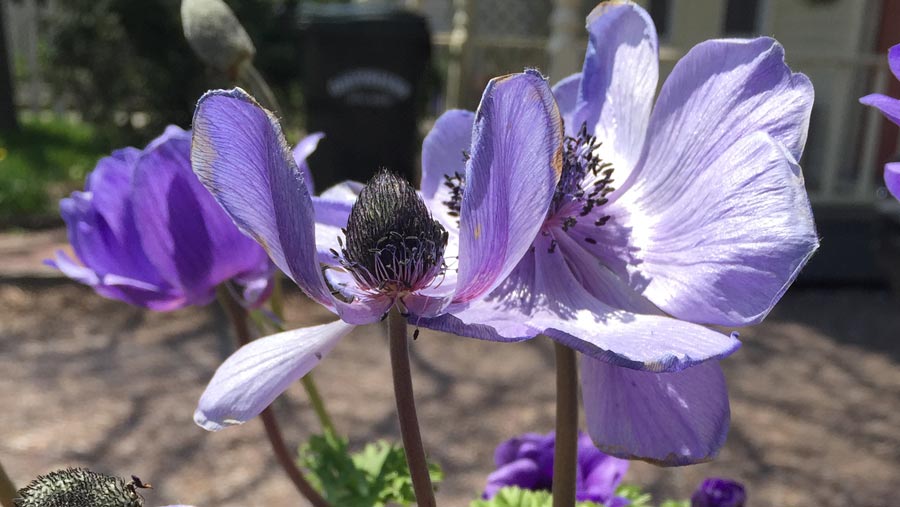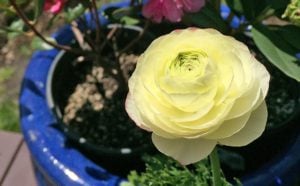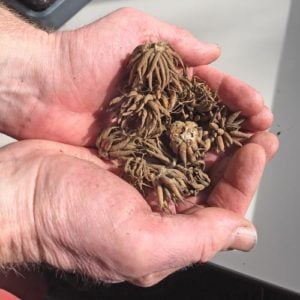Not hardy? Not a problem

Sometimes new traditions begin with an impulse buy. Last spring, I was at a garden center, struck by the beauty of a pot of blue-violet anemones and yellow ranunculus.

The anemones were so gorgeous. And the winter had been so long. Ten bucks didn’t seem like too much to pay for a pot of plants that bring so much joy—even if they would never survive a Vermont winter.
I gave the plants prime real estate on my front stoop, where I enjoyed them every morning for weeks. Sometimes, I even sat down and watched the bees at work in the fluffy black anthers of the anemones. It made me pause to savor the moment.
I got my bulbs for ranunculus and anemones last fall at Longfield Gardens.

Like many gardeners in cold zones, I am used to hearing, “That’s not hardy here.” Even so, my reply tends to be, “We’ll see about that.”
Also known as a windflower, Anemone coronaria is hardy in zones 7 to 10; I’m in zone 5. The ranunculus (Ranunculus asiaticus) is even more tender: zone 8 to 10.
 I’d heard from a local flower farmer that you could grow them in high tunnels, a sort of mini-greenhouse that farmers often use.
I’d heard from a local flower farmer that you could grow them in high tunnels, a sort of mini-greenhouse that farmers often use.
I didn’t have space for high tunnels, but I read about another technique at Floret Flowers. In short, you start the bulbs indoors and then move them outdoors when the weather warms. The process starts with soaking the bulbs overnight. Then, you plant the bulbs in a tray of soil where they “presprout.” Once the bulbs have rootlets that are about 1/4 inch or longer, you repot them — or transplant them into the ground. I plan to grow them in one of our Viva planters, which are now available in colors that will really show off those anemones.
 After just a few days in the trays, I see little cracks in the soil, indicating that roots are forming. This might just work.
After just a few days in the trays, I see little cracks in the soil, indicating that roots are forming. This might just work.
Print this Article:
Get the Dirt
Stay up to date on new articles and advice. Please fill out the information below.

